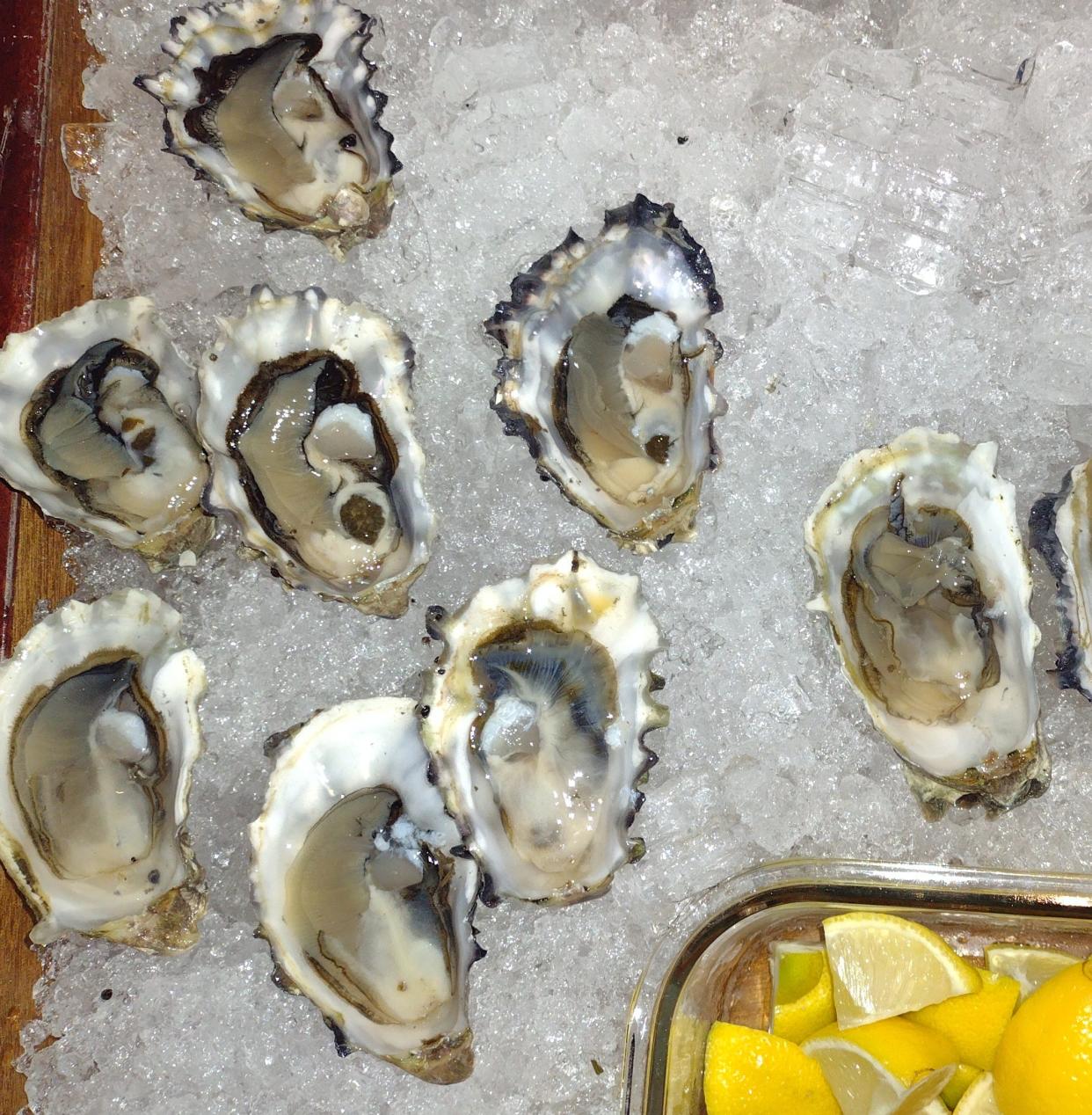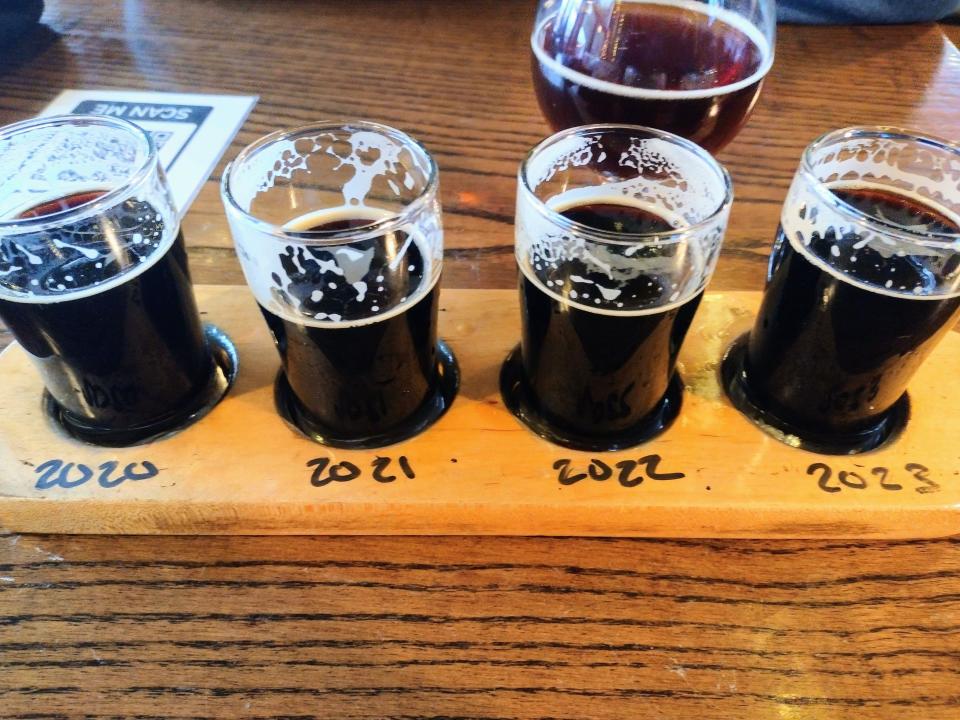Oysters aren't for everyone. But if they are for you, here's what to drink with them

Oysters aren’t for everyone. In fact, Jonathan Swift of "Gulliver’s Travels" fame wrote about these love ‘em or leave ‘em mollusks: “He was a bold man that first ate an oyster.”
It’s likely that bold person would have needed a little liquid courage to wash it down. Since oysters actually pair well with a wide range of beverages, below is a brief guide to the varieties of oysters and what liquid pairing partners to reach for.
Oysters are good for you; they’re rich in zinc, iron, and omega-3 fatty acids. This and other facts about these mollusks’ life were documented by M.F.K. Fisher in her 1941 book “Consider the Oyster.” This humorous and informative book has musings on the history, the love life and, of course, oyster cuisine.
So I considered the oyster and its many intricacies, species, varieties, and why some are saltier than others. I found that terroir is as important for oysters as it is for wine! But more aptly named "merrior."
Various species, from Europe to Hood Canal
European Flats or Belons (Ostrea Edulis) are native to Europe. Domestically, European Flats are grown in Maine. Their shells are round, flat and larger in size.
Atlantic oysters (Crassostrea Virginia), native to the Atlantic and Gulf coasts, are known for their savory, salty taste. They have a teardrop-shaped shell, larger than the Pacific oysters. Blue Point is the most well-known.
Olympia oysters (Ostrea Lurida) are the only oyster species native to the West Coast. Due to habitat loss, the wild Olympia oyster is protected by law. Farmed Olympias in the Puget Sound have some of the smallest shells, measuring less than two inches across at harvest. They’re sweeter with rounded shells and a deep pocket.
Pacific oysters (Crassostrea Gigas), native to the Japanese coast, are farmed in Australia, New Zealand, Europe, and the US. These oysters have a pointy, fluted shell.
Kumamoto oysters (Crassostrea Sikamea), cousins to the Pacific oyster, are named after their geographic origin. They have small, round shells with jagged flutes and a deep cup. At two inches, they are considered fully grown.
Two others we don’t see often, unless you’re "down under," are the Dredge oyster (Ostrea chilensis), native to Chile and the Sydney Rock oyster (Saccostrea glomerata), native to Australia.
What’s in an oyster’s name?
Here in the New World, oysters are farmed and usually called by a name that reflects the location where the oyster came from rather than the species of oyster. Belons (European species) grow in Maine and Pacifics (Japanese species) are farmed up and down the West Coast. Willapa Bay is the oyster capital of the world.
In the Hood Canal, the best-known varieties are Baywater Sweet, Dabob Bay, Dosewallips, Hama Hama, Quilcene and Thorndyke, all named for the bays and inlets up and down the large fjord.
Why merroir matters to taste
Merroir is to oysters like terroir is to wine. Merroir reflects the, its water temperature, salinity, and algae. Each place where grown influences the oyster’s flavor.
Each species may have the same shell shape, same size at harvest and coloring but where they are grown will have the greatest impact on the flavor. Oysters capture their essence from the place where they’re grown.
That’s because oysters are filter feeders. They gather nutrients from filtering the water where they grow. A single oyster can filter up to 5 to 7 quarts a day. This filtering develops their merroir.
So you're going to try oysters. Here's what to drink
What brought on this oyster rambling was the recent occasion to pair local stouts with local oysters at two Poulsbo breweries, Valholl Brewing and Rainy Daze.
Valholl Brewing poured a vertical flight of their Thunderbolt Imperial Stouts from 2020, 2021, 2022 and 2023. This big dark roast malt ale is around 9.5% ABV with 60 IBUs. Each year was unique even though brewed and hopped in a similar manner.

Poulsbo’s Loft at Latitude Forty-Seven Seven’s chef Michael Buholz dished up Hoshi from Hammersley Inlet and Hood Canal's Case Shoal. Oysters on the half shell, bloody mary, ginger-scallion and honey-chipotle flavored shooters were served.
At Rainy Daze, the Haulin’ Oats Stout was the perfect pairing to six oysters on the half shell doused with a lightly spiced mignonette. Stephen Schreck of Kelp Seasonings and Mobile Oyster Bar dished up Baywater Sweets and Thorndykes on the half shell with a mouthwatering mignonette.
Other than the traditional glass of bubbly or a hearty mug of stout, there are a host of drinks that pair well with that plate of oysters on the half shell.
If there's any one classic pairing for oysters, it's a crisp Muscadet made from the Melon de Bourgogne grape from the Loire Valley where the Loire River meets the Atlantic Ocean.
Lucky for us, Melon de Bourgogne is grown locally. Perennial Vineyards on Bainbridge Island produces a delightful Melon de Bourgogne. I have tried several vintages with delight.
With fried oysters, pick a dry, high-acid, carbonated beverage. The acid and the carbonation clean the oily fat off the palate and prepares it for the next delicious bite.
Briny oysters pair very nicely with a Belgian Tripel. The combination allows this crisply carbonated beer to cleanse the savory oils with each swallow. Allagash White is another award winning Belgian-style witbier that would also make your mouth sing.
Grilled oysters are my personal favorite way of enjoying oysters with family and friends. Only because I have a secret sauce that can make a believer out of the most ardent opponent of oysters.
It's a pesto-like blend of cilantro, rice wine vinegar, finely minced shallot, a dollop of vegetable oil, a sprinkle of sugar and a grind of fresh cracked peppercorns. Lay a spoonful on a warm, freshly grilled oyster and I swear, it’s a little bit of heaven.
I usually reach for a bubbly but also favor the Txakolina grape from Basque region in Spain. It’s a little-known varietal singing with high acidity and minerality that’s perfect with grilled oysters.
Oysters really do make a tasty beverage tastier. Although some may say it’s the other way around...
Mary Earl has been educating Kitsap wine lovers for a couple of decades, is a longtime member of the West Sound Brew Club and can pair a beer or wine dinner in a flash. She volunteers for the Clear Creek Trail and is a longtime supporter of Silverdale.
This article originally appeared on Kitsap Sun: Recommendations to pair with oysters of all types

